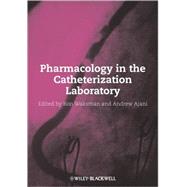
Note: Supplemental materials are not guaranteed with Rental or Used book purchases.
Purchase Benefits
What is included with this book?
| Contributors | p. viii |
| Acknowledgements | p. xiii |
| Foreword | p. xiv |
| Preface | p. xv |
| Elective PCI anticoagulation therapy/thrombin inhibitors | |
| Optimal antithrombotic therapy | p. 3 |
| Low molecular weight heparin in the catheterization laboratory | p. 10 |
| Direct thrombin inhibitor: Bivalirudin | p. 16 |
| Fondaparinux in the cardiac catheterization laboratory | p. 23 |
| Antiplatelet therapy | |
| Optimal antiplatelet therapy: Duration of antiplatelet therapy with drug-eluting and bare metal stents | p. 33 |
| Clopidogrel: How much, how soon, and how long | p. 41 |
| Loading strategies of clopidogrel | p. 46 |
| Cangrelor | p. 53 |
| Prasugrel: A novel P2Y12 receptor inhibitor | p. 59 |
| When to use glycoprotein IIb/IIIa inhibitors and which one to use: Abciximab, tirofiban, or eptifibatide? | p. 67 |
| Acute coronary syndrome STEMI/NSTEMI | |
| Antithrombotic therapy for non ST-elevation acute coronary syndromes | p. 81 |
| Non antithrombotic postprocedural pharmacotherapy: The role of statins, beta-blockers, angiotensin-converting enzyme, or aldosterone inhibitors in acute coronary syndromes and elective percutaneous coronary interventions | p. 93 |
| Primary percutaneous coronary intervention for ST elevation myocardial infarction: Summary of optimal anticoagulation, glycoprotein IIb/IIIa platelet inhibitors, and other antiplatelet therapies | p. 104 |
| Rescue percutaneous coronary intervention | p. 112 |
| Facilitated primary percutaneous coronary intervention in acute ST-elevation myocardial infarction | p. 118 |
| Streptokinase, alteplase, reteplase, or tenecteplase | p. 133 |
| Intracoronary vs intravenous glycoprotein IIb/IIIa inhibitor use | p. 140 |
| Upstream vs procedural use of glycoprotein Ilb/IIIa inhibitors in acute coronary syndromes | p. 145 |
| High-dose tirofiban | p. 154 |
| Oral anticoagulation issues in percutaneous coronary intervention | p. 158 |
| Elective PCI miscellaneous | |
| Agents to optimize access of radial artery approach | p. 167 |
| High-risk PCI | |
| Diabetes mellitus | p. 173 |
| Cardiogenic shock | p. 179 |
| High-risk coronary intervention and renal dysfunction | p. 190 |
| Renal-protective agents | p. 195 |
| Radiocontrast-induced nephropathy | p. 203 |
| Ideal contrast agent | p. 210 |
| PCI complications | |
| The no reflow phenomenon: Etiology, prophylaxis, and treatment | p. 219 |
| Arrhythmia management in the cardiac catheterization laboratory | p. 227 |
| Tachyarrhythmias management | p. 229 |
| Bradyarrhythmias management (intravenous atropine, adrenaline, indications for temporary pacing wire) | p. 235 |
| Postprocedural pharmacotherapy | |
| Management of patients on long-term anticoagulation | p. 243 |
| Indication for anticoagulation post-percutaneous coronary intervention | p. 250 |
| Clopidogrel use in patients requiring coronary artery bypass grafting | p. 257 |
| Anticoagulation anomalies | |
| Heparin-induced thrombocytopenia | p. 263 |
| Thrombocytopenia, anemia, and transfusion of blood products in patients undergoing percutaneous coronary interventions | p. 270 |
| Antiplatelet therapy resistance: Definition, diagnosis, and clinical implications | p. 280 |
| Reversal of anticoagulation: Protamine | p. 287 |
| Thrombocytopenia post-percutaneous coronary interventions: Glycoprotein IIb/IIIa-induced | p. 294 |
| Systemic pharmacotherapy for in-stent restenosis | |
| Is oral rapamycin plus bare metal stents a feasible alternative to drug-eluting stents? Lessons learned from Argentina observational and randomized studies (ORAR I, II, and III trials) | p. 305 |
| Systemic pharmacotherapy for in-stent restenosis: Steroids | p. 328 |
| Oral agents to prevent in-stent restenosis (oral sirolimus and glitazones) | p. 337 |
| Novel pharmacotherapy in percutaneous coronary intervention | p. 346 |
| Appendix | p. 354 |
| Index | p. 371 |
| Table of Contents provided by Ingram. All Rights Reserved. |
The New copy of this book will include any supplemental materials advertised. Please check the title of the book to determine if it should include any access cards, study guides, lab manuals, CDs, etc.
The Used, Rental and eBook copies of this book are not guaranteed to include any supplemental materials. Typically, only the book itself is included. This is true even if the title states it includes any access cards, study guides, lab manuals, CDs, etc.